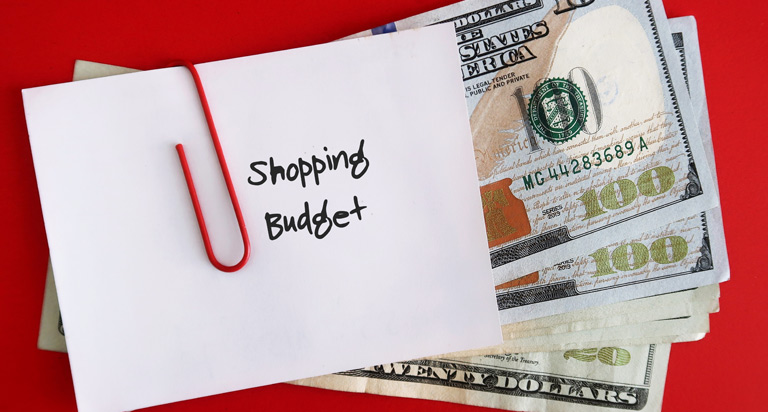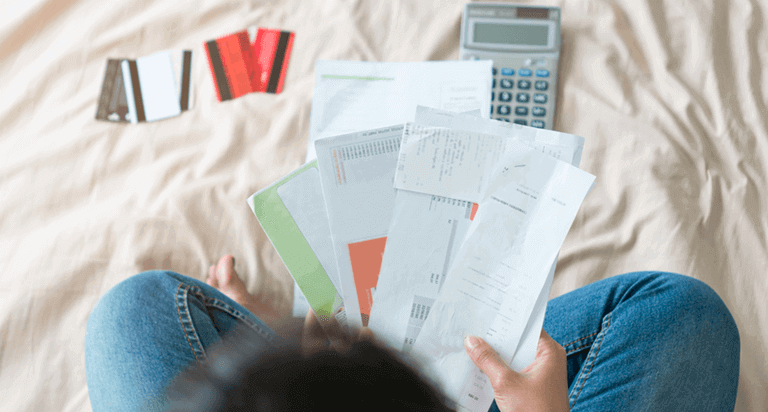Understanding Cash Stuffing: A Comprehensive Guide


Highlights:
- Cash stuffing is a budgeting technique that involves setting aside cash to cover your monthly expenses.
- One of the biggest benefits of cash stuffing is that it's much more difficult to overspend.
- Cash stuffing doesn't require complicated calculations or mobile apps, making it ideal for anyone who's new to budgeting.
In a world filled with digital banking tools, cash stuffing, also known as the Envelope System, is a rather unique approach to saving money. Instead of relying on debit cards, credit cards and checks, you put cash into envelopes labeled with the names of your major budget categories.
Cash stuffing differs from traditional budgeting methods in these ways:
- Instead of tracking your spending in a spreadsheet or budgeting app, you allocate cash in envelopes.
- You use cash to pay for your purchases instead of swiping a card or writing a check.
- You can't start cash stuffing unless you have a budget.
Cash stuffing vs. digital banking
Cash stuffing has many benefits, but there are some potential challenges. For example, if you want to pay your utility bills in cash, you'll have to go to each office during normal business hours. Some people are also concerned about carrying large amounts of cash in public. With digital banking, you don't have to worry about these issues. You can initiate a funds transfer at any time, eliminating the need to pay your bills in person.
A hybrid approach allows you to pay some bills online and cover other expenses with cash. For example, you can use digital banking to pay your mortgage and utilities and then use cash to pay for groceries, clothing, entertainment and pet supplies. It's all about finding the right balance for your needs.
Benefits of cash stuffing
The cash stuffing method has several benefits:
- Controlled spending: With cash stuffing, it can be easier to control your spending. That's mainly because if an envelope has no cash in it, you can't spend any money in that category until your budget resets.
- Visual reminders: When you use a credit or debit card, you never really see the money come out of your account. Cash stuffing gives you visual reminders of how much you've spent and how much you have left in each spending category.
- Reduced risk of racking up debt: If you stick to using cash only, you can't overdraft your bank account or exceed your credit limit.
- Better financial management: Before you start putting cash in envelopes, you need to create a budget as part of a healthy financial initiative. Having a budget makes it easier to track your spending and identify opportunities to save money.
Getting started with cash stuffing
Here's how to start cash stuffing in just a few simple steps.
1. Create a budget
Before you set up your envelope system, you need to know how much you spend every budgeting period. Choose the budgeting period that makes the most sense for your financial situation, such as monthly or biweekly.
To create a budget, add up your net income for each budgeting period. For example, you may have $3,400 in net income from your job and $400 in net income from a side hustle ($3,800 total).
Next, figure out your expenses for the budgeting period. Start with these common categories:
- Rent/mortgage payment
- Groceries
- Utilities (gas, electric, water, sewer)
- Transportation expenses (car payment, gasoline, ridesharing fees, subway fare, etc.)
- Medical expenses, such as prescriptions
- Debt payments
- Insurance (auto, homeowners/renters, health, life)
- Entertainment, such as streaming services
- Internet/phone service
- Clothing
- Pet care
- Personal care
Review several months' of bank and credit card statements to make sure your budgeted amounts are realistic.
2. Purchase envelopes
You can use this method with plain white mailing envelopes, but if you want to make budgeting more fun, buy colorful envelopes made specifically for cash stuffing.
Another option is to buy a cash-stuffing wallet, which is an accordion-style wallet with compartments for your envelopes. Once you have your envelopes in hand, label each one with the name of a category in your budget.
3. Stuff each envelope with cash
At the beginning of the budgeting period, you'll need to calculate how much you need to pay your expenses and then withdraw that amount of money from the bank. Once you have the cash in hand, start stuffing it into your envelopes.
4. Spend cash according to your budget
When it's time to make a payment, take the cash out of the designated envelope. This makes it easier to see how much you've spent and how much you have left in each category.
5. Keep track of your spending
Although cash stuffing can give you more insight into your spending habits than other budgeting methods do, it's still important to track your spending. If you're using paper envelopes, subtract each transaction from your original balance to determine how much you have left.
If you want to reuse your envelopes from one budgeting period to the next, record each transaction in a notebook or spreadsheet. The key to using the cash-stuffing method successfully is to stick to your budget.
6. Repeat the process every budgeting period
Repeat this process every time a new budgeting period begins. For the first few budgeting periods, you may need to tweak the amount you've budgeted for each category.
For example, perhaps you forgot about one of your streaming subscriptions when you set up your budget. The next time you stuff envelopes, you can set aside enough to cover the fee.
Managing your cash envelopes
If you're concerned about carrying large amounts of cash, leave most of your envelopes at home when you head to the grocery store or go somewhere to pay a bill. Bring only the envelope you need to complete your transaction.
For example, if you're going to pay your electric bill in person, bring the utility envelope and leave the rest at home.
Maximizing savings with cash stuffing
Cash stuffing isn't just a budgeting tool; it's also a helpful way to save money. When you set up your budget categories, you can easily dedicate an envelope to saving or investing.
A fun way to increase your savings is to complete a savings challenge. During this type of challenge, you save small amounts of money until you reach a larger goal. If you set aside $10 per week for 1 year, for example, you'll have $520 saved by the end of the challenge. You can also use cash stuffing to prioritize other financial goals. Maybe you want to save a down payment for a new vehicle. If your goal is $5,000, you can put aside money every month until you have $5,000 in hand.
To maximize your savings and reach your goals as quickly as possible, be careful not to overspend. Cash stuffing gives you regular visual reminders of how much you're spending, making it an excellent budgeting tool.
It's in the envelope
Like all budget strategies, it requires some discipline and you'll need to accurately build out your monthly budget. Because it's a more hands-on approach than traditional budgeting apps, you'll also need to plan for traveling to physical locations, such as banks, to pay any bills that are due. If you're used to paying bills via online banking, this can take some getting used to and may feel overwhelming at first.
However, if you haven't seen much success using other budgeting methods, cash stuffing is an alternative way of getting your finances in line.
Get your free credit score today!
We get it, credit scores are important. A monthly free credit score & Equifax credit report are available with Equifax Core CreditTM. No credit card required.



